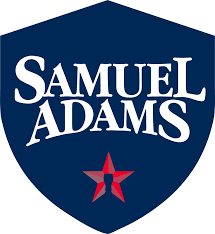I didn’t put up a post about the Urban Artifact and Sam Adams collaboration yet, because every time I get something written, it keeps shifting more and more away from the topic that started the post in the first place. It was originally about the collaboration between the two breweries that has been a long time in the making, and a huge opportunity for the Wild and Tart masters of Northside.
It’s about something else now, though. Or I think that it’s about something else. Flavor, intention, reasoning, creativity, I think they all play pretty deeply into this collaboration, and even more so into this blog post about said collaboration. Hang in there with me on this – let’s see if we can get my thoughts in order.
 Tricorne
Tricorne
Let’s start with the simple part – Tricorne is the collaboration beer. It’s a NE IPA that uses Paw Paw, Ohio’s only native fruit to bring a banana, mango, custard like flavor to the party.
The breweries teamed up in a really intense way, not only in the brewing process, but they soured up some of the wort at Urban Artifact, and blended it with some at Sam Adams, and fermented it there. The test batch of the NE IPA was brewed in boston, the sour profile came from Urban Artifact’s extensive knowledge based on their other beers, and the flavor of the paw paw was developed in a lab after extensive collaborative meetings between both breweries and the Wild Flavors company.
Wait… what? Yeah, Urban Artifact helped create a flavoring to mimic paw paw fruit. That’s where things in this post take a turn, and where I got my first angry email about why I wasn’t “calling out” Urban Artifact on using this flavoring.
Real Fruit Matters
There are no doubt a lot of you who thought you understood Urban Artifact’s stance on fruit and flavoring pretty well. Hell… Urban Artifact thought they understood their stance on fruit and flavoring pretty well. Just as recently as the release of their Pickle Beer from Izzy’s the brewery stated pretty clearly:
“Our brewing philosophy is to use only the best ingredients in our beers such as whole fruits, spices and vegetables; no flavorings or extracts”
Flavorings? Extracts? Not in our beer!
Learn why real fruit mattershttps://t.co/4TcnLEsVE1#peaches #sourbeer pic.twitter.com/QXpZeBQVnj— Urban Artifact (@UrbanArtifact) October 6, 2017
So… what gives? How can a brewery sell their soul so quickly when a Sam Adams comes knocking. How can they so quickly turn their back when the Sam Adams comes calling?
To really understand this we have to dig in a little deeper to what Urban Artifact does, and more importantly why they do it the way they do. The use of real fruit can be contributed to the first part of that quote “The best ingredients”.
The Best Tool For The Job
From pretty early on, when head of Urban Artiafct’s Brewing operation, Bret Kollman Baker would talk about fruit extracts – he would talk about chemical flavors… poor taste. When the brewery would poke “fun” at some of the other “fruit” beers around, they would compare how a beer using real fruit tastes compared to one with extracts. This is where you need to focus your attention. If you read Urban Artifact’s blog post about this beer, you’ll see that they end the post with an interesting quote:
“If you’re open and transparent about the use of flavorings, it now seems like a viable option when natural ingredients fail. Not that we will trade splitting vanilla beans and zesting orange peels for jugs of extract any time soon, but it’s not off the table.”
Paw Paws failed the brewery this time. They couldn’t get enough high quality paw paws to craft the beer that they wanted to make. So they didn’t. They teamed up with the best in the business to create a flavor that met the standards that they’ve set for themselves.
This isn’t cutting corners. This isn’t using an inferior flavor in a beer because it’s cheaper… or easier. This is using the best tool for the job, to create the best beer that they can.
What’s My Takeaway?
I haven’t even tried Tricorne yet – so I can’t speak for the beer. But I can speak for Urban Artifact. I can only imagine that first time that the conversation was brought up if using an extract was going to be the best option… and I know that if it wasn’t, they wouldn’t’ ahve done it – Sam Adams or not.
Are there bad extract and flavored beers – yeah. Are there good ones though? Yeah… there are.
As things keep shifting and changing day to day, year to year – the important part about all of this is finding a baseline for yourself. How do you judge a beer, how do you judge a brewery or a brewer? How do you judge a beer community? How do you judge ‘Craft Beer’? Find what that is for you… understand it and always be ready to tear it apart and rebuild it.
